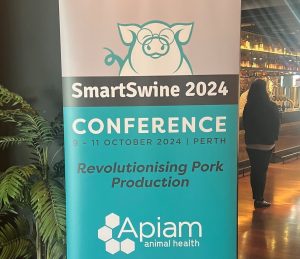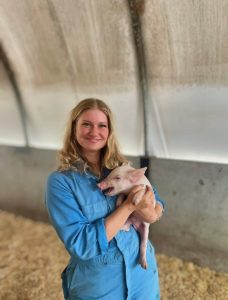Research paper co-authored by Hugo Dunlop published in Livestock Science on the impact of stomach ulcers in finisher pigs.
Erosion of the non-glandular region of the pig stomach is a common non-infectious condition, caused by a combination of feed processing and intake factors. The paper examined the effects of a naturally occurring outbreak of erosion/ulceration in a modern pig farm system. Pigs were monitored from 3.5 to 22.5 weeks of age, including a 2-day period of reduced feed intake at 10 weeks of age, due to unintentional inclusion of an unpalatable high salt additive. Pelleted diets supplied to the farm consisted of standard wheat, plant protein and feed additive ingredients, averaging 610 μm particle size. At 22.5 weeks of age, all remaining study pigs (n =901) were processed and the non-glandular stomach region visually scored for erosion/ulceration. The ulcer score for each study animal was correlated to its
average daily weight gain, based on the age at weaning (days), age at processing (days), and carcass weight (kg). This correlation indicated a significant reduction in growth rate among growing pigs with stage 3 stomach erosion/ulceration. The economic impact as calculated from the weights at slaughter, average daily feed
intakes and 5-year averages of feed cost and carcass value indicated a significant reduction in likely market income derived from growing and finishing pigs with stage 3 stomach lesions. No such reduction was evident in study pigs with stage 1 lesions. The study confirms the likely economic impact of severe gastric ulceration in modern farm pigs.









